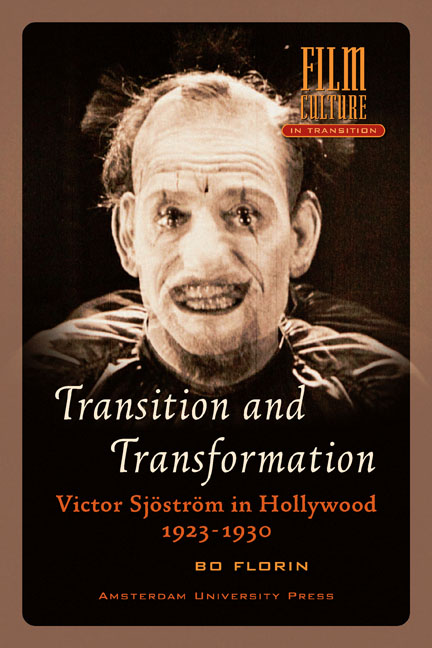Book contents
- Frontmatter
- Contents
- Acknowledgements
- Introduction – From Sjöström to Seastrom
- Sjöström – From National to International
- A European in Hollywood – NAME THE MAN and the Shift of Production Systems
- From Scientist to Clown – HE WHO GETS SLAPPED
- A for Adultery – THE SCARLET LETTER
- Conquering Nature – THE WIND
- Fragmented Pieces – Writing the History of the Lost Hollywood Films
- The Shadow of the Silents – A LADY TO LOVE
- The Genius and the System– Some Concluding Remarks
- Notes
- Bibliography
- Filmography
- Index
- Film Culture in Transition
The Shadow of the Silents – A LADY TO LOVE
Published online by Cambridge University Press: 22 December 2020
- Frontmatter
- Contents
- Acknowledgements
- Introduction – From Sjöström to Seastrom
- Sjöström – From National to International
- A European in Hollywood – NAME THE MAN and the Shift of Production Systems
- From Scientist to Clown – HE WHO GETS SLAPPED
- A for Adultery – THE SCARLET LETTER
- Conquering Nature – THE WIND
- Fragmented Pieces – Writing the History of the Lost Hollywood Films
- The Shadow of the Silents – A LADY TO LOVE
- The Genius and the System– Some Concluding Remarks
- Notes
- Bibliography
- Filmography
- Index
- Film Culture in Transition
Summary
The story of Sjöström's last film in Hollywood has mostly been told as a story of failure, though the fact that the film has recently been rediscovered has made it difficult for later historians to judge the work itself. In the following, I will not make any judgements of the work as such, but rather try to frame the film historically as an early sound film. This question will be approached first by presenting the two language versions that were made, but then also by discussing the way that the film expresses the transition to sound in various ways, in the use of dialogue, sounds or music, as well as the way that it still keeps certain stylistic traits from earlier films, thus also expressing the transition from silent cinema. By the specific problems of language and culture that the sound brings along, this film also evokes themes that seem to encompass Sjöström's whole career as a European director in American exile.
Bengt Forslund noted that the project seems to have been conceived all of a sudden, that the short time lapse between the original idea and the shooting was probably not ideal, as this was Sjöström's first sound film, and that “not much has been noted about the shooting, but I don't think that Sjöström was at ease – not even with the actors”.
After having spent a sabbatical year in Sweden, Sjöström returned to Hollywood in September 1929. He was then immediately offered to direct a film of a play by Sidney Howard, They Knew What They Wanted (1924), which had played on Broadway from November 1924 to October 1925, and which had won the Pulitzer Prize in 1925. Sidney Howard himself had presented a synopsis to MGM in early September, followed by a first script version – the working title was “Sunkissed” – and received approval from Thalberg a month later, on 15 October 1929. Sjöström started shooting on 8 November.
- Type
- Chapter
- Information
- Transition and TransformationVictor Sjöström in Hollywood 1923–1930, pp. 119 - 132Publisher: Amsterdam University PressPrint publication year: 2013



